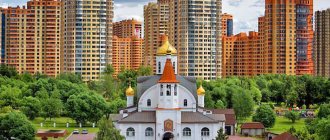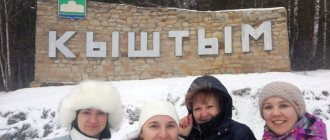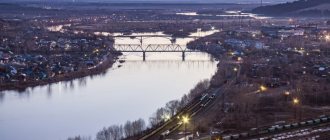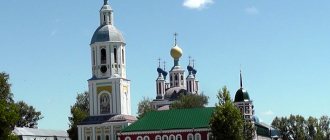| Flag of Kommunar (city) | Coat of arms of Kommunar (city) |
| A country | Russia |
| Subject of the federation | Leningrad region |
| Municipal district | Gatchina district |
| Square | 12.7 km² |
| Postal codes | 188320—188322 |
| Coordinates | Coordinates: 59°37′30″ N. w. 30°24′00″ E. Longitude / 59.625°N w. 30.4° east d. (G) (O) (I)59°37′30″ N. w. 30°24′00″ E. Longitude / 59.625°N w. 30.4° east d. (G) (O) (I) |
| Head of the Moscow Region | Vlasov Alexander Vasilievich |
| Telephone code | +7 8137165 |
| Former names | before 1918 - Village at the Rogers and Peiffer factory |
| National composition | Russians, Finns and others |
| Official site | https://kommunar.spb.ru/ |
| Timezone | UTC+4 |
| Vehicle code | 47 |
| Ethnobury | communards, communarets, communarka |
| Population | ▲ 20,270[1] people (2011) |
| OKATO code | 41 218 505 |
| First mention | November 17, 1843 |
| City with | June 28, 1993 |
| Center height | 60 m |
Plan of the Tsarskaya Slavyanka estate. 1885
Kommunar is a city (since 1993) in Russia in the Gatchina municipal district of the Leningrad region. The administrative center and the only settlement of the Kommunarovsky urban settlement.
Located in the northeastern part of the region on the Izhora River, 16 km northeast of Gatchina.
Population: 20,270 inhabitants (January 1, 2011). According to this indicator, it ranks second in the Gatchina region.
The city is the center of the pulp and paper industry.
Kommunar: the most ordinary city. A look from the outside and from the inside
Taking a minibus at the Moskovskaya metro station or an electric train in Kupchino, from the southern outskirts of St. Petersburg you can go not only to the museum-imperial Pavlovsk, Tsarskoe Selo and Gatchina. And not only in industrial-Soviet Kolpino.
With no less success, you can find yourself in a small town called Kommunar, hidden between Pavlovsk and Gatchina. What is there to do? We do not know. But it seems to us that it is worth talking not only about legendary and iconic places, but also about the most ordinary cities.
There will be no trash talk about gray high-rise buildings and the aesthetics of ruin. No. We will just tell you about the most ordinary city - what it looks like and how it lives.
View from outside
The first thing that comes to mind when visiting Kommunard is that it is a very small town. And precisely in size. The central street (Leningradskoye Shosse), which is crossed by a number of smaller streets, one of which leads to the plant. That's all. This is a typical urban-type working settlement, for some reason called a city in 1993.
Secondly, the attractions here, even by the standards of the village, are quite modest. A dozen shabby Stalin buildings (a cultural center, a post office and a dozen residential buildings), and several unremarkable monuments to war participants and workers of a local enterprise.
Oh yes, there are also a couple of wooden buildings, for example, the building of the local children's sports school, preserved from post-war times, and now surrounded by typical boxes of houses from the late Soviet period.
It looks quite unusual - the areas in the south of Leningrad looked approximately the same when their construction began on the site of former villages in the 1970s. But the memory of this in St. Petersburg was preserved only in old photographs, but in Kommunar it is present more than materially.
In general, the most important thought that does not leave you the entire time you are in Kommunar is that you have already seen all this somewhere in St. Petersburg. In Kupchino or Ozerki? In the west of Vasilyevsky Island, Ulyanka or Grazhdanka? Somewhere out there, yes. And in this similarity to everything at once, with some effort, one can find the special charm and even attractiveness of Kommunard.
Yes, it’s not hard to guess that the bulk of the city’s buildings are standard panel houses from the 1970s – 1980s. Here is something for the discerning connoisseur of standard architecture to profit from (oh yes, such people exist).
The fact is that on the streets of Kommunar are collected almost all the most famous standard house designs developed for the north-west of the USSR: from numerous modifications of the 528 series, to the legendary “ships” 1LG - 600A (yes, standard houses are different, and very ).
So if the aesthetics of the residential areas of the Brezhnev era still warms your soul, then you can even get some pleasure from visiting Kommunar.
The most amazing thing is that in such rather dull scenery a completely glorious life is taking place. There are a lot of young people on the streets, all the courtyards are occupied by children's playgrounds, and these courtyards, despite their shabby appearance, look quite well-groomed. And, leaving Kommunar, whether you like it or not, the thought creeps into your head that after all, it’s not the place that makes a person beautiful, but exactly the opposite.
A look from the inside
If you live somewhere long enough, you stop noticing the shabbyness and roughness of the space around you. Maybe that’s why not a single resident of Kommunar could call his city an urban-type settlement. Kommunard is a city, and a real one at that.
However, local youth often strive to leave their hometown and go to the “mainland” - St. Petersburg. Since the 90s, it has been the custom that Kommunar is a kind of buffer zone between the lack of visible opportunities and high hopes for the future.
On the one hand, leaving Kommunar, many strive to say goodbye to its almost eternal queues at the post office, in the clinic and other government institutions, the far from the most harmonious architectural environment and the proximity of pulp and paper industry enterprises (there is no such thing in St. Petersburg, yeah).
But, on the other hand, they immediately part with many modest delights of a small town: the opportunity to play tennis, swimming or fitness at the local sports complex for little money, good and relatively cheap Internet, or the opportunity to buy freshly baked bread in a small store in the city center right on one of the main stops.
Kommunard is really similar to most of the St. Petersburg outskirts. But its small size and small population make the city not so much Grazhdanka, Ozerki or Kupchino, but rather their model in miniature. So you can really see a lot in common between Kommunar and the outskirts of St. Petersburg, but there are also many local features.
For example, in the north of the city, or, in local parlance, “in the nut,” there is a local shawarma establishment and a vape shop. There are other “meeting places”, for example – fashion stores that solve the need of young people for new clothes.
The tradition of companies (literally) “sitting on the pipes” (or “on the pawn”) of the city’s heating system is no longer so relevant, but is still alive. After sunset, the opportunity to explain the color of shoelaces, Martins, or choice of hairstyle is as high as on the streets of Kupchino or Vesyoly Settlement.
In recent years, Kommunar has changed noticeably. Ten years ago it was really hidden somewhere between Pavlovsk and Gatchina, but now everything is somewhat different. City services, whenever possible, improved the houses and adjacent courtyards, and repaired a large number of roads. New cafes, shops, shopping malls and even a cozy cafe at a flower shop have appeared, where you can while away the time with coffee and dessert while reading books. The commune lives and develops, and everything will be fine for him.
Artyom Shipunov, Elena Tcherezova
If you find an error, please select a piece of text and press Ctrl+Enter.
Are there many people the same age as our guest Nina Gemadinovna Mikheeva, friends of her childhood and youth, who can tell us about the past of our Kommunar? “Very few, almost everyone has already died,” is Nina Gemadinovna’s answer. People leave, time moves inexorably forward. It is important to preserve the memories of our respected elderly fellow countrymen, be sure to have time.
“My parents worked on the collective farm next to the factory,” recalls Nina Gemadinovna. — Before the war, we bought a house in Kommunar. “Right behind the building of the former canteen (now children do creative work there), on the site of a yellow two-story house, was our family’s new home at that time.” Later, in the early fifties, it would be dismantled and moved to Selskaya Street.
Her parents (later) worked in a factory. Father, Nurdinov Gelmandin Beldinovich, worked as deputy director. The war began and my father went to the front. Mom was left alone with two children in her arms (my sister was born in April 1941) and with a sick grandmother.
“The Germans were already in charge in Kommunar. When a local woman reported on my father that he was a communist, they came to shoot my mother. She took the children in her arms - kill them all! People defended mother and children. And in the evening a woman who lived with the Germans came and said that they all needed to leave Kommunar before the morning. Mom gathered the children and they left with their sick grandmother on a sled.
It took two months to walk to the village of Utorgoshi, Novgorod region, where we lived for almost a year. And from there the Germans took the family to Latvia. We lived there on a farm; little remains in our memory from that period. I remember how the lonely owner of the farm begged my mother to stay when they returned to their homeland in 1944.”
The commune suffered greatly during the occupation.
The school where Nina went to study was the only one and was located in the building where the sports school is now. Where today the house at Lenshose, 14 was the village council, there was also a post office. And on the site of the department store there was a bakery, they ate their own bread. The police were in a standard house on Pionerskaya Street, 7. Behind the old bathhouse, director Ivanov built three large greenhouses. They supplied factory workers with vegetables at a low price. There was also a laundry room in the bathhouse,” says Nina Gemadinovna. She also remembers the prisoner of war camp, where her uncle served as a guard there. Along the restored railway, on handcars, prisoners transported equipment from the station to the factory.
In the evenings, young people gathered at the club, where there was a dance floor in the park and a fountain. They also gathered at the house on Shkolnaya Street, 3. The accordion played and sang songs. Nina Gemadinovna worked for two decades of hard life at her native factory.
Thank you, dear Nina Gemadinovna, for sharing your memories with us! Let us take the liberty on behalf of the townspeople to wish you health and many more years of life! We hope that you and other respected old-timers of Kommunar will find the opportunity to tell us about the past of our house.
Galina Kirasnova, Sergey Bogdanov, photo Galina Kirsanova, Lada Kudrina
Address of the Assumption Cemetery on the map
188320, Leningrad region, Gatchina district, Kommunarskoe urban settlement, Assumption cemetery.
Schedule
Open daily:
from 9:00 to 19:00 from May to September;
from 9:00 to 18:00 from October to April.
Phone number of the Assumption Cemetery
Reference information by phone of the City Ritual Service 8
Free shipping
Transporting the body to the morgue
Required documents
To organize a funeral
Allocation of space in a cemetery
According to the legislation of the Russian Federation
Demography
Population changes from 1959 to 2011:
Commuting migration is common among city residents: about 6,000 city residents go to work or study in St. Petersburg.
The unemployment rate is 0.67%.
The demographic situation is characterized by natural population decline.
Honorary residents of the city of Kommunar
- Ivanov Anatoly Ivanovich (2003)
- Ogurskoy Yuri Borisovich (2004)
- Sergachev Valery Nikolaevich (2006)
- Nikolaev Dmitry Vladimirovich (2009)
- Ilyin Vladimir Ivanovich (2007)
- Kuzmenkova Liya Vasilievna (2005)
- Golod Yankel Beniaminovich (2004)
Obtaining a place at the Assumption Cemetery
You can obtain permission for burial with a coffin in a new plot or for sub-burial in a relative grave at the Assumption Cemetery from the legal department of the administration of the Kommunarsky urban settlement. For subburial, a sanitary period of at least 20 years from the last funeral applies. The ashes of the deceased after cremation can be buried in an urn without any time limits.
To purchase a cemetery plot for family burials, you must contact the administration
How to get to the Assumption Cemetery
Automobile
From the Ring Road (67th km, inner ring) through the interchange to the left along Pulkovskoye, Kievskoye, highway. Go through the junction to the left along road 41K-217. To the left along Pavlovskoye Highway, to the right in Romanovka along the road 41K-010, in the town of Kommunar to the right along the street. Rural. On the road leading to Kobralovo, after the railway crossing, turn left to the cemetery.
Electric train
From Vitebsky station to the stop. “Kobralovo”, then cross the railway tracks and exit onto the street. Green. Follow it and along the road running along the railway track in a northerly direction for 1.2 km to the necropolis.
Public transport
The bus to the Assumption Cemetery leaves from the station. metro station "Kupchino". Take minibus 545A to the stop. "Western" in Kommunar. Then take bus 527 to the stop. "Kobralovo". Walk 1.3 km to the cemetery in a northerly direction along the street. Central, Green and the road running along the railway track.








